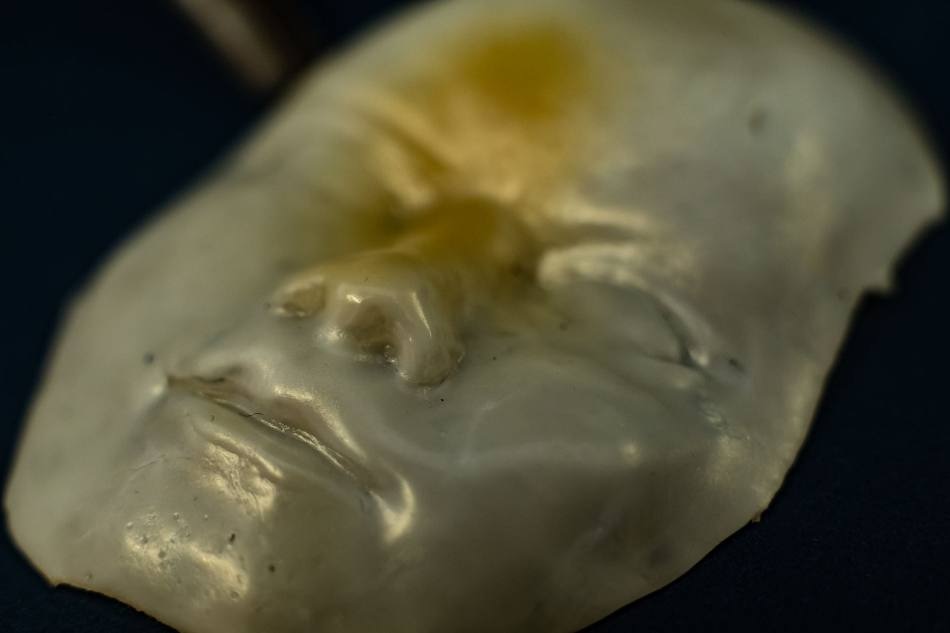Dec 21 2018
Researchers from Rice University have developed a novel rubbery, shape-shifting material that is capable of morphing from one advanced form to another on demand.
 A face made of a unique polymer at Rice takes shape when cooled and flattens when heated. The material may be useful in the creation of soft robots and for biomedical applications. (Image credit: Jeff Fitlow)
A face made of a unique polymer at Rice takes shape when cooled and flattens when heated. The material may be useful in the creation of soft robots and for biomedical applications. (Image credit: Jeff Fitlow)
Materials scientist Rafael Verduzco, along with graduate student Morgan Barnes, programmed the shapes into a polymer. These shapes appear in ambient conditions and then melt away upon the application of heat. The process also works in a reverse way.
The streamlined operation belies a conflict at the nanoscale, wherein liquid crystals and also the elastomer in which they are integrated fight for control. When cooled, the shape that is programmed into the liquid crystals dominates, and when heated, the crystals relax inside the rubber band-like elastomer, similar to ice melting into water.
In a majority of the samples developed by Barnes so far—including a Rice logo, a face, a rose, and a Lego block—the material adopts its intricate shape at room temperature. However, when the same material is heated to a transition temperature of approximately 80 °C (176 °F), it falls into a flat sheet. Upon removing the heat, the shapes pop back up within two minutes.
While this may seem to be fanciful, the material holds potential for soft robots that imitate organisms and it can even be used in biomedical applications requiring materials that can take already programmed shapes at body temperature. The study has been published in the Royal Society of Chemistry journal Soft Matter.
These are made with two-step chemistry that has been done for a long time. People have focused on patterning liquid crystals, but they hadn’t thought about how these two networks interact with each other. We thought if we could optimize the balance between the networks—make them not too stiff and not too soft—we could get these sophisticated shape changes.
Rafael Verduzco, Professor, Chemical and Biomolecular Engineering, Materials Science and Nanoengineering, Rice University
Verduzco informed that the liquid crystal state is the easiest to program. After the material is given shape in a mold, the crystalline order can be set through five minutes of curing under ultraviolet light. In addition, Barnes prepared samples that swap between two shapes.
Instead of simple uniaxial shape changes, where you have something that lengthens and contracts, we’re able to have something that goes from a 2D shape to a 3D shape, or from one 3D shape to another 3D shape.
Morgan Barnes, Graduate Student, Rice University
The next target of the lab is to reduce the transition temperature. “Activation at body temperature opens us up to a lot more applications,” stated Barnes. She added that reactive Braille text for the visually impaired or tactile smartphone buttons that appear when touched could soon become a reality. She would also like to create a variant that reacts to light and not to heat.
“We want to make it photo-responsive,” said Barnes. “Instead of heating the entire sample, you can activate only the part of the liquid crystal elastomer you want to control. That would be a much easier way to control a soft robot.”
The study was supported by the Welch Foundation for Chemical Research, the U.S. Army Research Office Chemical Sciences Division, and the Shared Equipment Authority at Rice.
Mighty morphing materials take complex shape
Video credit: Rice University